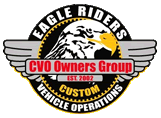The metal is new, not seasoned. In a perfect world they would stay true but after measuring as many as I have most are not true. That is not a function of poor machine work or wear.
Distortion due to uneven heating and cooling or overheating is my theory. Once the metal is seasoned they seem to remain relatively stable after the first bore job.
I wonder if this indicates a bit of stress relieving/normalising of the combined Aluminium casting and cast Iron liner is going on (from the casting process) at the operating temperatures of the engine. Then once the stresses are relieved along with some deformation of the previously machined casting (this could also apply to the liner). Once the deformation has taken place the whole combined cast iron liner/Aluminium casting becomes stable. Which is what you could be referring to by your statement "Once the metal is seasoned they seem to remain relatively stable after the first bore job".
Is there a Metallurgist out there who could comment on this?
Below, for interest, is an excerpt from
http://webhotel2.tut.fi/projects/caeds/tekstit/metals/metals_aluminum.pdf T5
Direct thermal ageing, which is done without any prior solution heat treatment. The
casting is usually heated to 150‐170°C for 8‐10 minutes, and is then left to cool in the
air. After some time in the furnace, the material acquires maximum hardness which
thereafter decreases. Thermal ageing contributes to the separation of hardening parti‐
cles.
T6
Complete age hardening, which is achieved by a thermal treatment in three stages:
solution heat treatment, cooling and ageing. The solution heat treatment is usually
conducted at 520‐530 °C for three hours or more, depending on casting thickness and
the type of alloy. The heat treatment is followed by rapid cooling, then by natural
ageing for 24 hours. After that, the casting is thermally aged at 150‐170°C for ca. 5‐15
hours, depending on casting thickness and the type of alloy; during this period, age‐
hardening particles are formed. Thermal ageing is followed by cooling at room tem‐
perature.
T7
Solution heat treatment and averaging, i.e. thermally aged beyond the point of maxi‐
mum hardness.54
F
As cast.
Stress‐relief annealing
Stress‐relief annealing is often carried out in connection with machining, which often
results in deformation due to the release of internal tensions in the casting. Annealing
usually occurs at 315‐345°C for 2‐4 hours.
 Author
Topic: A lot of Torque about Talk??? Plates that is. (Read 7405 times)
Author
Topic: A lot of Torque about Talk??? Plates that is. (Read 7405 times)

